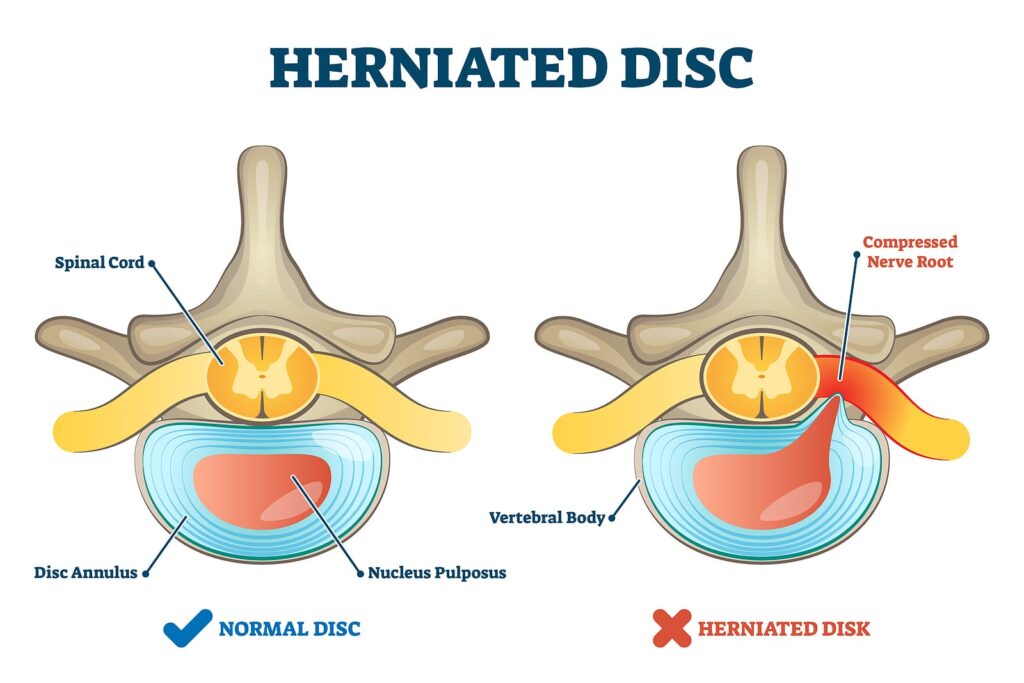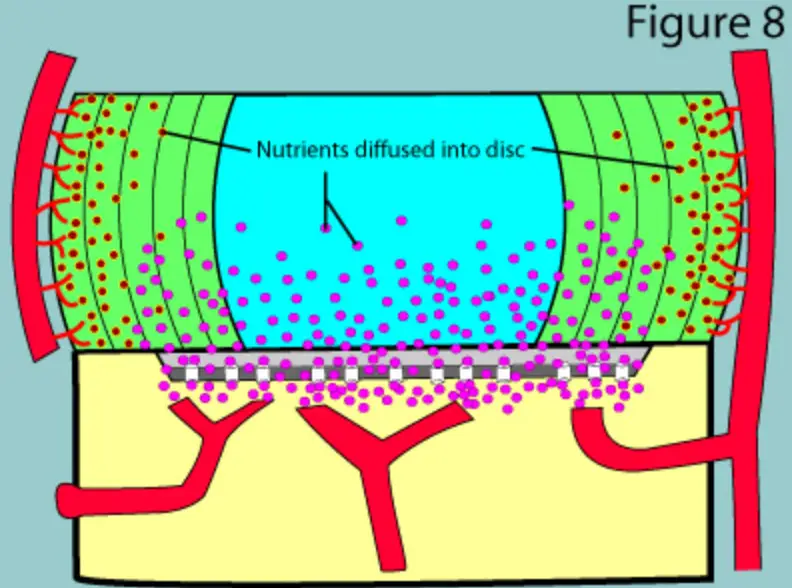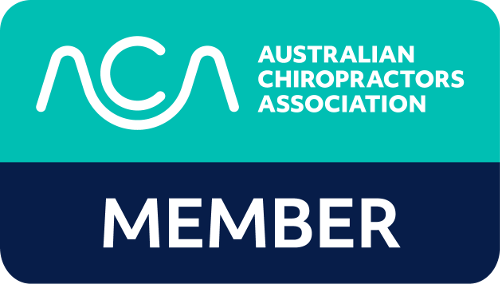There are many myths regarding herniated discs. In this post, we will endeavour to clarify some of the misunderstandings, starting with whether a disc can slip out of place, also known as a “slipped disc”.
Myth 1: Slipped discs.
“Slipped discs” often refer to herniated discs. However, a disc cannot slip out of its place. In a herniated disc, the inner gel-like part, the nucleus pulposus, pushes through some layers of the disc wall, the annulus. Hence, a “slipped disc” cannot be repositioned. But in some cases, the herniation will shrink over time.
Myth 2: Herniated discs are mainly caused by incorrect lifting.
While lifting improperly might contribute, a herniated disc is not solely due to this. The herniation process starts within the disc. Damage to the endplate releases proteins and matrix metalloproteinases (MMPs), affecting both the inner nucleus and the outer annulus. Genetics (70%) and environmental factors (30%) play significant roles. Notably, individuals between the ages of 30 and 50 are most prone. Inflammation-inducing conditions, such as high blood sugar and obesity, can escalate MMP activity, leading to disc herniation.


The Impact of Smoking on Disc Health
Discs derive nutrition from arteries, which also nourish vertebral bodies. Smoking disrupts this process by limiting oxygen supply and impeding waste elimination, like lactic acid.
Why Disc Nutrition Matters
Disc health hinges on proper nutrition. The disc gets most of its blood supply from the vertebrae above and below. A compromised blood supply can starve the disc of vital nutrients. If nutrient levels plunge below 60%, cells die from the centre outward. At levels below 30%, nearly all core cells die. Discs that degenerate are particularly vulnerable due to decreased water content, hampering nutrient transport. A great way to enhance disc nutrition is movement. Walking for 30 minutes daily will cause disc movement and help exchange nutrients.

Factors Predisposing One to a Herniated Disc
- Age: Those between 30 and 50 are most at risk.
- Occupation: Jobs involving repetitive lifting or twisting.
- Weight: Obesity increases the lower back strain.
- Genetics: Genetic predisposition is a factor.
- Lifestyle: Sedentary living and improper lifting techniques.
- Trauma: Accidents might hasten a vulnerable disc’s herniation.
- Driving: Extended periods of driving, particularly with vehicle vibrations, can exacerbate risks.
Chiropractic Interventions
Addressing inflammation is crucial as such conditions might precipitate herniated discs and musculoskeletal issues. Recognizing this helps patients make lifestyle adjustments, particularly concerning high blood sugar and obesity. This awareness dispels archaic misconceptions and fosters a proactive health approach. Preventive actions such as maintaining a healthy weight and leading an active lifestyle are beneficial.

Herniated Discs: A Glimmer of Hope
Many herniated discs improve with time. Remarkably, more prominent herniations might have a better chance of shrinking. Activities like walking enhance disc nutrition. While specific exercises like back extensions might help, always consult a healthcare expert. Avoid prolonged sitting or driving to ensure optimal healing. Gentle chiropractic manipulations can assist some patients, but precise diagnosis and continuous monitoring are vital. At the same time, some might require interventions like steroid injections or surgery, but most benefit from non-invasive treatments.
In Summary
While genetics can predispose individuals to disc herniations, preventive measures such as regular exercise are beneficial. If you suffer from a herniated disc, it’s comforting to know that many cases can be managed conservatively, and not all necessitate surgical intervention.


